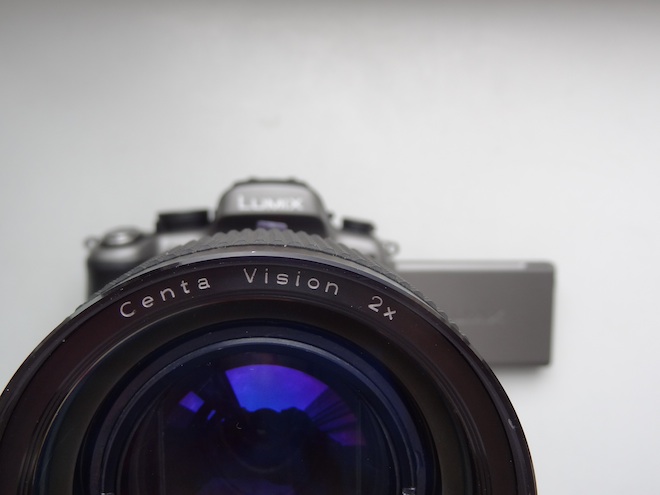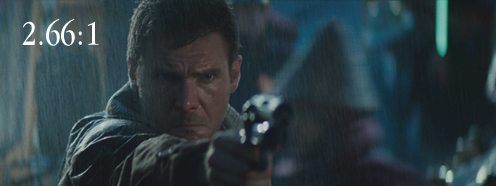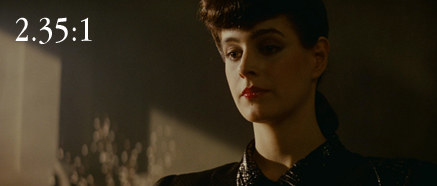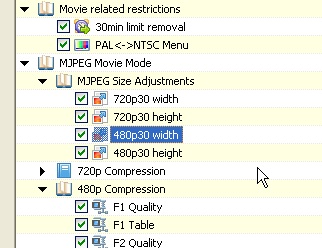
With the latest PTools 3.61d there are some new anamorphic shooting and workflow options. Key to this is a big improvement to the 480p MJPEG mode that I first shot with a few weeks ago. The good news is it’s now capable of proper HD video in 4:3 and not just upscaled 480p. It also does the squeeze in-camera so you can edit the clips straight off the card without pesky aspect ratio corrections in post.
When a 2x anamorphic lens is used you get a more reasonable image from 4:3 and not the very wide 3.55:1 you’d otherwise get from 16:9.
It’s similar to the anamorphic 35mm film look.
Film is also 4:3 but some of that frame is taken up by audio tracks so a 2x anamorphic actually produces 2.35:1 with film, and that became the Cinemascope standard. 4:3 on the GH2 really is 4:3 so with a 2x anamorphic you get 2.66:1 not 2.35:1 but it’s still a lot more preferable to 3.55:1 which is a bit too wide for my liking.
Here is what each aspect ratio actually looks like:
3.55:1 (1920×540)

2.66:1 (1920×720)

2.35:1 (1920×820)

And the TV aspect ratios:
Dipsy 16:9 (1920×1080)

Po 4:3 (1440×1080)

Notice how ‘Po’ (4:3) is exactly half the width of Deckard (2.66:1), that’s what the 2x compression of an anamorphic lens means – it packs double the field of view into the frame and when you stretch it out by 2x afterwards you get a distortion free image in the wider 2.66:1 aspect ratio.
2.66:1 is very similar to 2.35:1 as you can see and only a little bit wider and narrower. By reference here is what you get from other well known anamorphic lenses in normal 16:9 AVCHD or on Canon DSLRs.
- LA7200 1.33x, 16:9 goes to 2.35:1
- Iscorama 1.5x, 16:9 goes to 2.66:1
So now with our 2x Kowa, LOMO, Sankor and Proskar glass on the hacked GH2 looks more like an Iscorama on the 5D Mk II in terms of aspect ratio.
I’ve tried a few different options. One is to set MJPEG to 1920×1080 to try and maximise resolution off the sensor but it doesn’t really seem to gain you any extra detail and is slightly below the 1080p you get in AVCHD mode. Next was 1920×810 upscaled in post and cropped at the edges but that doesn’t give you 2.66:1 out of camera and I don’t see the point of the hassle and cropping to get 2.35:1 when 2.66:1 is so similar.
1440×1080 is another option, but since the MJPEG 1080p looks more like 720p upscaled (I guess it only scans 720 lines on the actual sensor) there isn’t really a gain and that gives you 4:3 MJPEGs that have to be resized to 1920×820 in post for 2.66:1.
Now your image won’t be quite as high res or clean as in AVCHD/24p and MJPEG is 30p unfortunately, but if you really need 2.66:1 and don’t like the 3.55:1 from AVCHD this is the way to go. It’s simple and resolution is as good as any other MJPEG option in practical use, basically as good as PTools currently alows. It gives you a distortion free MJPEG file straight off the SD card (but not in live-view like on the GH1 unfortunately).
Finally, here’s how to apply the settings in PTools:
- Download the EOSHD 2.66:1 2x anamorphic .INI settings file here
Note: this file also gives you AVCHD 42Mbit. You can select or change other patches as necessary after loading the settings file
- Put the settings file in the same place as PTools
- Open PTools and click the E settings preset (round buttons at the bottom)
- 480p30 width should now be 1920 and height 720. The 480p higher bitrate settings are loaded automatically as well, approximately 100Mbit max (VBR).
- Click any other patch you wish to have like the PAL / NTSC menu and set the version increment as you see fit. I have it at 10. You don’t need to change it every time you apply a new firmware patch.
- Save as GH2__V11.bin and copy to card, turn on camera and press play to update



